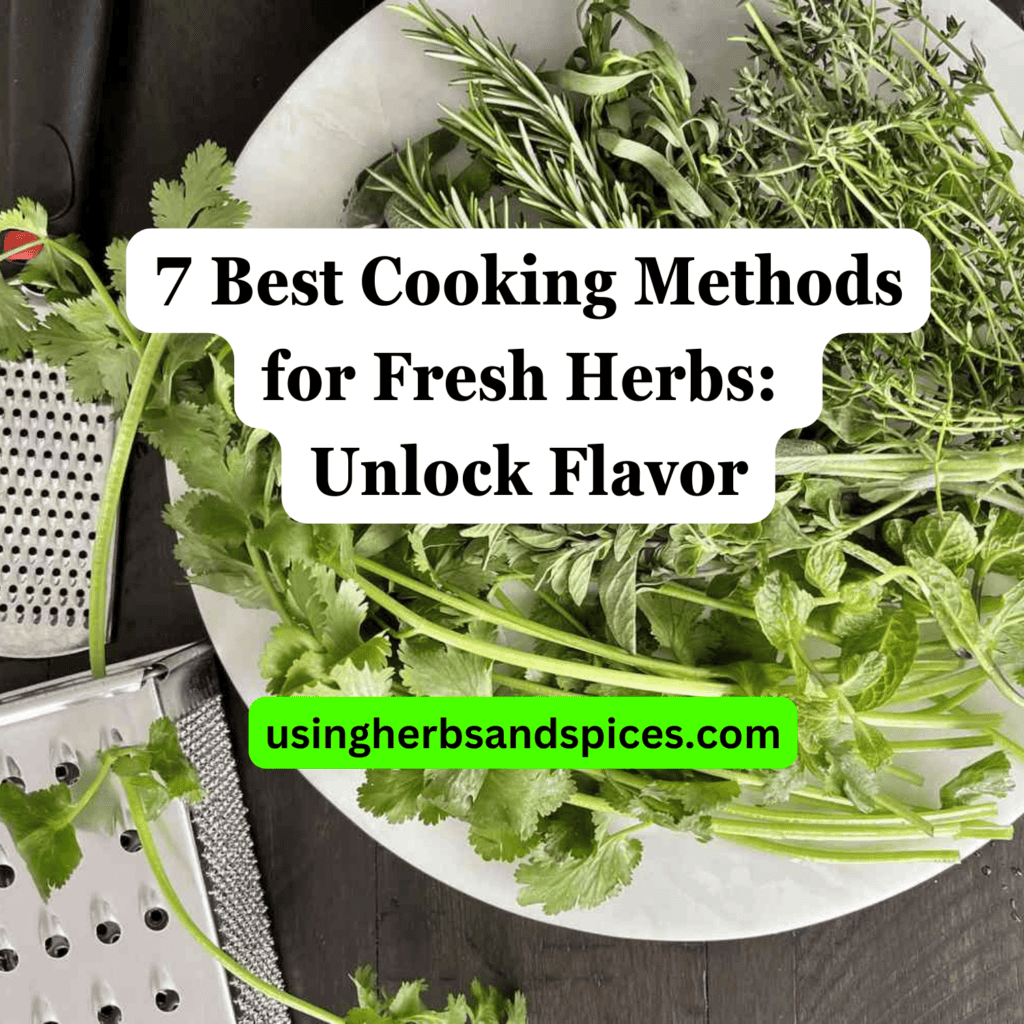SUMMARY: Discover transforming your meals by infusing oils, making herb-infused butters, creating pastes and pesto, and steeping herbs to unlock rich flavors. These methods elevate the aroma and taste of your dishes, making herbs essential in your cooking.
Are your dishes lacking the vibrant flavors you crave?

Mastering the art of cooking with fresh herbs can make all the difference.
- Infusing Oils with Fresh Herbs
- Creating Herb-Infused Butters
- Making Flavorful Herb Pastes and Pesto
- Steeping Herbs for Depth in Liquids
Continue reading to unlock the full potential of fresh herbs in your cooking, making every meal an aromatic adventure.
Infusing Oils
One of the simplest yet most effective ways to elevate your cooking game is by infusing oils with fresh herbs. This process unlocks the oils’ essence, dispersing the complex flavors of herbs like rosemary, thyme, or basil throughout your cooking oil. The result? A versatile and aromatic oil that can be the foundation of countless dishes, from salads to sautéed vegetables.
To start, gently heat your choice of oil with your selected herbs over a low flame. The key is to allow the herbs to simmer, releasing their flavors without burning. After cooling, strain the oil to separate the herbs and store your infused creation in an airtight container. The longer it sits, the more pronounced the flavors become, making every drop a potent addition to your culinary creations.
Making Herb-Infused Butters
Turning fresh herbs into herb-infused butters is an exceptional way to bring a new layer of taste to your cooking repertoire. Begin by finely chopping your chosen herbs, such as rosemary, thyme, or basil, and gently fold them into softened butter. This method not only preserves the herbs’ freshness but also allows their essential oils to meld beautifully with the butter’s creaminess. Once infused, herb butters can be refrigerated or even frozen, ready to add a gourmet touch to steaks, bread, vegetables, and pasta dishes with a simple melt-over.
Finishing with Fresh Herbs
Using fresh herbs as a final touch not only introduces a splash of color but also infuses the dish with a burst of flavor. This method involves sprinkling freshly chopped herbs over the finished dish, allowing the residual heat to gently release their essence without diminishing their vibrant flavor and aroma. Whether it’s adding basil to your pizza, cilantro to your tacos, or chives to your creamy mashed potatoes, finishing with fresh herbs can truly make your dishes come alive.
Baking with Herbs
Incorporating fresh herbs into your baking can infuse breads, pastries, and other baked goods with a subtle, earthy flavor. This method involves finely chopping or layering herbs into the dough or batter before baking. As the goods bake, the heat gently extracts the flavors from the herbs, embedding them into every bite. From rosemary focaccia to lemon-thyme pound cake, baking with herbs is a delightful way to add a new dimension to your favorite recipes.
Elevate Every Dish with Fresh Herbs
In this exploration of fresh herbs in the culinary world, we have unearthed practical and transformative methods to enhance every meal you prepare.
- Infusing oils with fresh herbs brings an aromatic base that elevates even the simplest dishes.
- Integrating herb-infused butters can significantly enrich the flavors of baked goods and sautéed creations.
- Creating herb pastes and pesto offers a direct route to imbuing your recipes with intense herbal flavors.
- Steeping herbs in liquids deepens the complexity and adds nuanced layers to soups, stews, and sauces.
Embracing these cooking methods will not only make fresh herbs a fundamental part of your kitchen but also transform your culinary experiences. Let the natural vibrancy of fresh herbs lead the way to richer, more flavorful dishes that delight the senses and inspire your cooking journey.
7 Best Cooking Methods for Fresh Herbs FAQs
What are the benefits of cooking with fresh herbs?
Cooking with fresh herbs brings a multitude of benefits, including the enhancement of flavor profiles in dishes, adding a nutritional boost, and introducing aromatic elements that can transform a meal from ordinary to extraordinary. Fresh herbs are a powerhouse of vitamins and antioxidants, contributing to overall health and wellness.
How should fresh herbs be stored to maintain their flavor?
To preserve the vitality and essence of fresh herbs, it’s essential to store them properly. Generally, soft-stemmed herbs like cilantro and parsley should be kept in a glass of water in the refrigerator, almost like a bouquet of flowers, while hard-stemmed herbs like rosemary and thyme can be loosely wrapped in a damp paper towel and placed in a resealable bag in the fridge. The key is to maintain moisture without causing the herbs to become soggy or moldy.
Can you use dried herbs in place of fresh herbs?
While dried herbs can be used as a substitute for fresh in some recipes, they often have a more concentrated flavor, so ratios need to be adjusted accordingly (the general guideline is 1 teaspoon of dried herbs for 1 tablespoon of fresh). However, for certain cooking methods like infusing oils or creating herb-infused butters, fresh herbs are highly recommended to achieve the optimal depth of flavor and aroma.
Are there any herbs that should not be cooked?
Most herbs can be cooked, but there are a few, such as cilantro and basil, that tend to lose their vibrant flavor and color when exposed to prolonged heat. These herbs are best added towards the end of the cooking process or used as a garnish to preserve their essence. Understanding the characteristics of each herb will guide you in maximizing their culinary potential.
